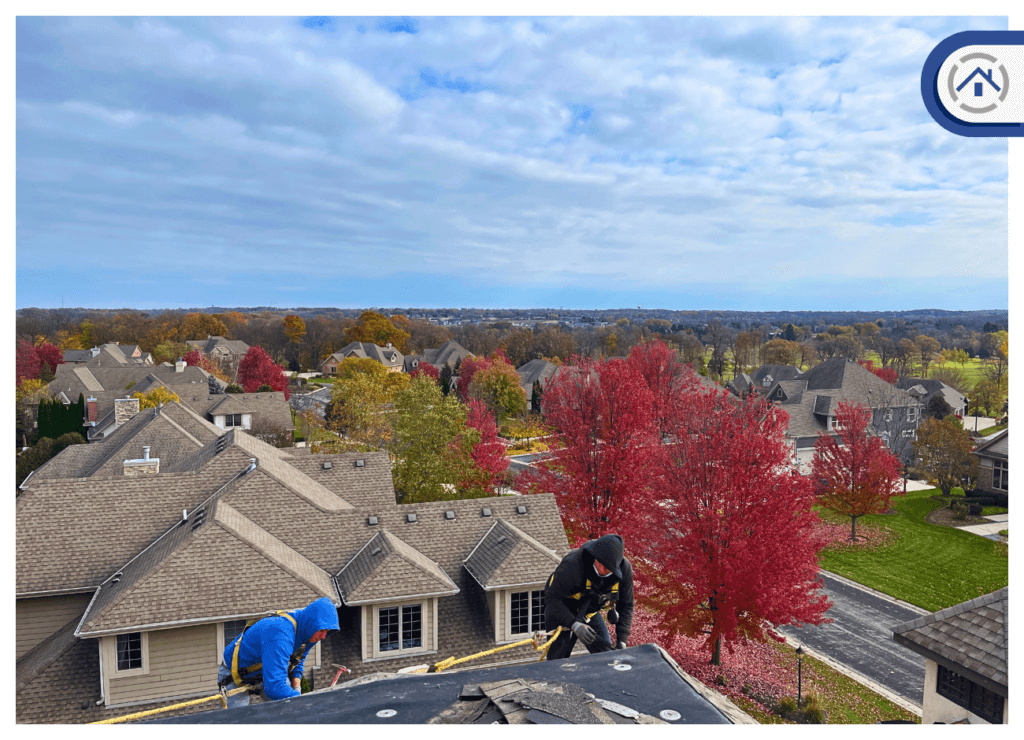

Milwaukee County has a total of 212 roofing contractors, which is a testament to the region's efforts to maintain high standards in the construction industry. Additionally, the U.S. Bureau of Labor Statistics predicts a 2% growth in the roofing industry from 2022 to 2032, indicating that this commitment to excellence is expected to continue in the Milwaukee area as well.
The roofing industry is experiencing growth due to factors such as increased construction activity, infrastructure development, and higher demand for roofing services in the local market. Milwaukee County is well-positioned to benefit from this trend, which could result in more options and opportunities for residents and businesses looking for roofing solutions in the area.
Despite its population, Waukesha County has only 168 roofing contractors. This can be attributed to several factors, such as the actual demand for roofing services, local regulatory requirements that act as entry barriers, the competitive landscape, economic conditions that affect career choices, potential industry specialization, and the geographic distribution of contractors within the county.
The Milwaukee-Waukesha-West Allis area has around 890 roofers in its workforce, according to the U.S. Bureau of Labor Statistics. This means that there are 4.2 roofers per 1,000 jobs in the region. This data provides important information about the roofing industry in the area. It shows that the industry has a significant presence and employment density in the local labor market.
Every year, around 7,795 roofs are being done in the Milwaukee area, with a special focus on residential properties. This estimate considers the number of households in the region, indicating a high demand for roofing services in the local residential real estate market.
The cost of roofing varies depending on location, with specific averages for Waukesha County and Milwaukee. Homeowners in Waukesha County typically spend an average of $9,899 for a new roof, while those in Milwaukee spend around $8,241 for replacements or installations. These figures reflect the regional differences in construction and labor costs, as well as market dynamics, which can influence the overall pricing for roofing projects in these areas.
It is estimated that approximately 5,670 roofs are being built or worked on annually in the Waukesha area, based on an analysis of household count. The majority of these projects are focused on residential properties, highlighting the strong demand for roofing services in the local residential real estate market, similar to that of the Milwaukee area.

With the average size of commercial buildings in the United States standing at approximately 15,700 square feet, it's reasonable to infer that the average size of commercial roofs in the country would likely align with this figure. Commercial roofs are generally designed to cover the entire footprint of the building they protect so that this average building size can serve as a rough estimate for the typical size of commercial roofs.
However, it's worth noting that roof sizes can vary significantly depending on the type of commercial property, its function, and specific architectural considerations. As such, precise roof sizes may vary, but the average provides a useful benchmark for understanding the scale of commercial roofing projects.
As of the latest available data, the market for commercial roofing materials in the United States stands at an estimated $2.2 billion. This figure reflects the significant size and economic activity within the commercial roofing industry, driven by the construction, maintenance, and renovation of commercial buildings across the country. The demand for quality roofing materials in the commercial sector remains robust, emphasizing the importance of this industry within the broader construction and building materials sector.
The construction of new commercial buildings in the United States has been on the rise, reflecting a dynamic trend in the market. In 2003, the U.S. saw the completion of 65,664 new commercial buildings. This number surged significantly to 67,118 cases in 2017, reaching a total of 1,594 in that year alone. The growth continued in 2018, with 68,396 new commercial buildings constructed across the nation. Given this steady increase in commercial building construction, it's reasonable to infer that the demand for new commercial roofs likely corresponds to this trend, with a substantial number of new commercial roofing projects being undertaken annually to accommodate these expanding structures.
